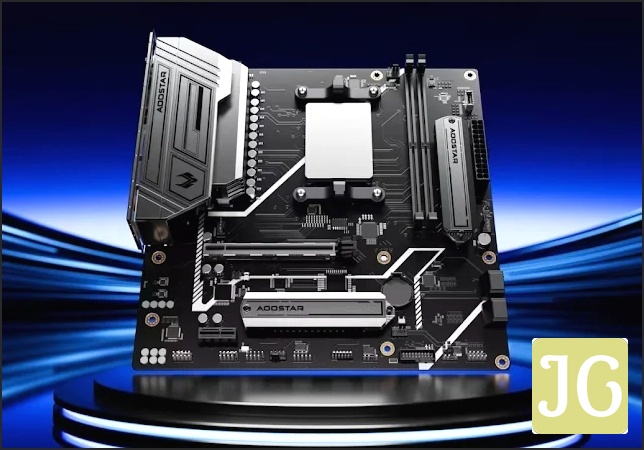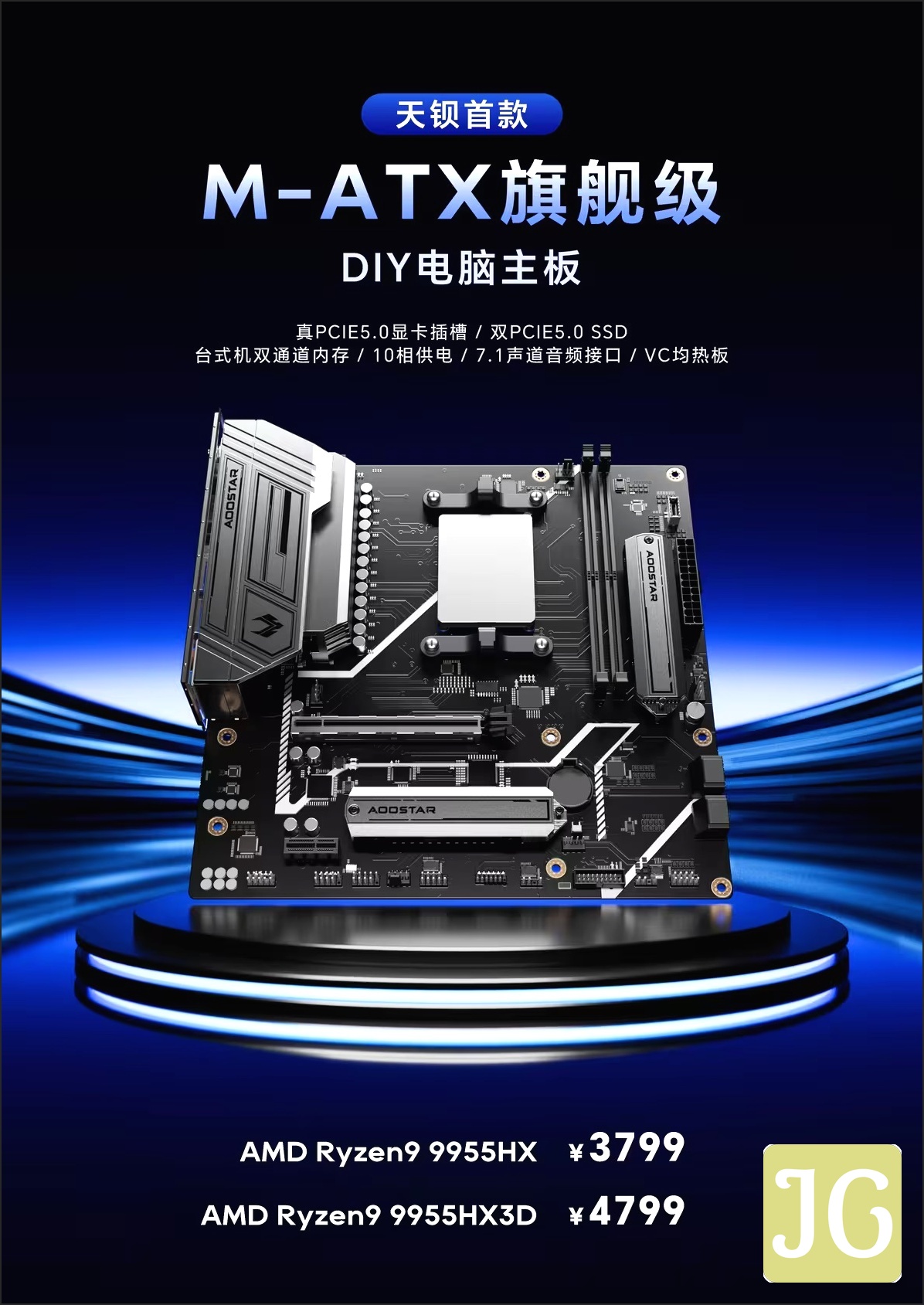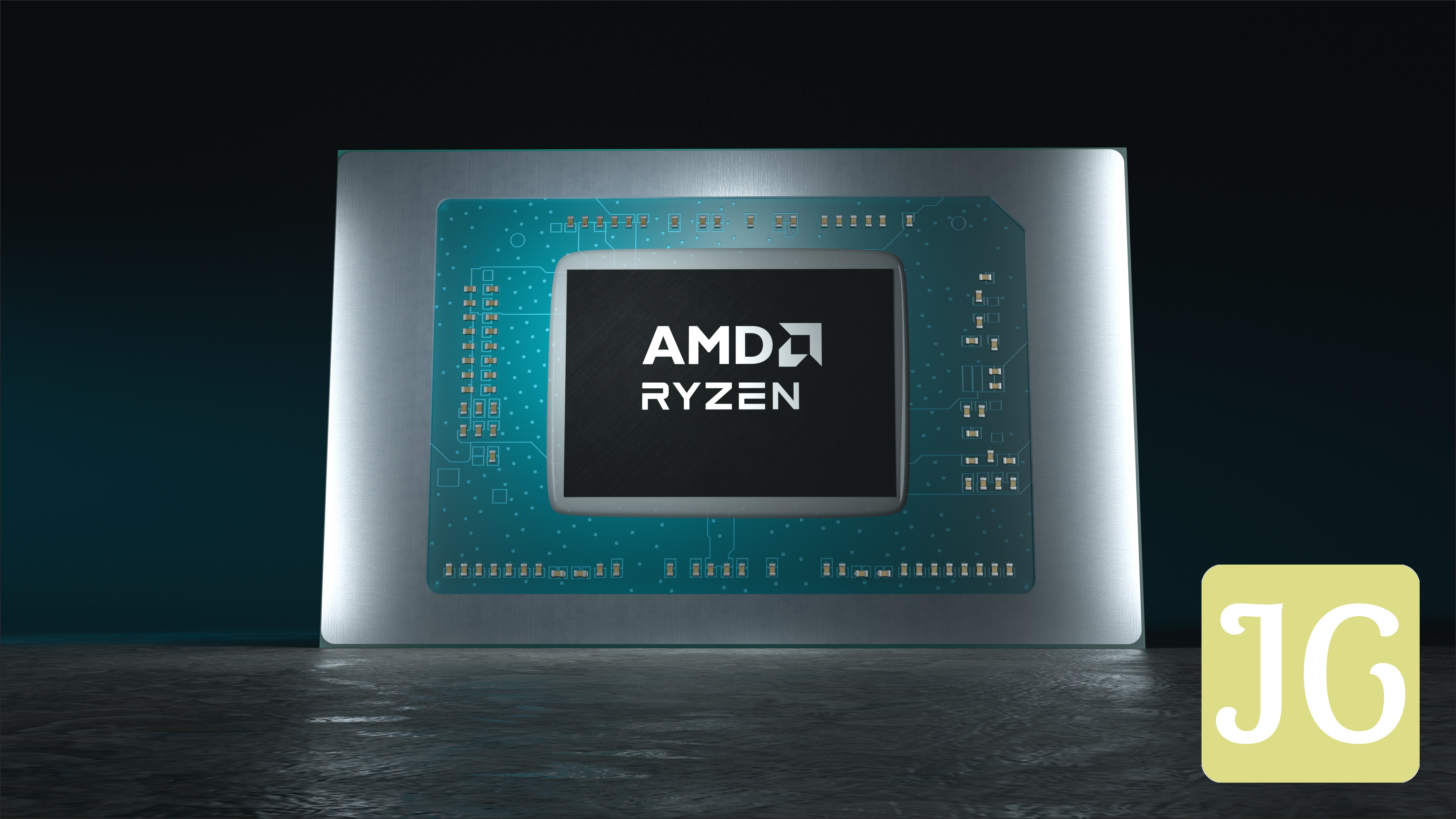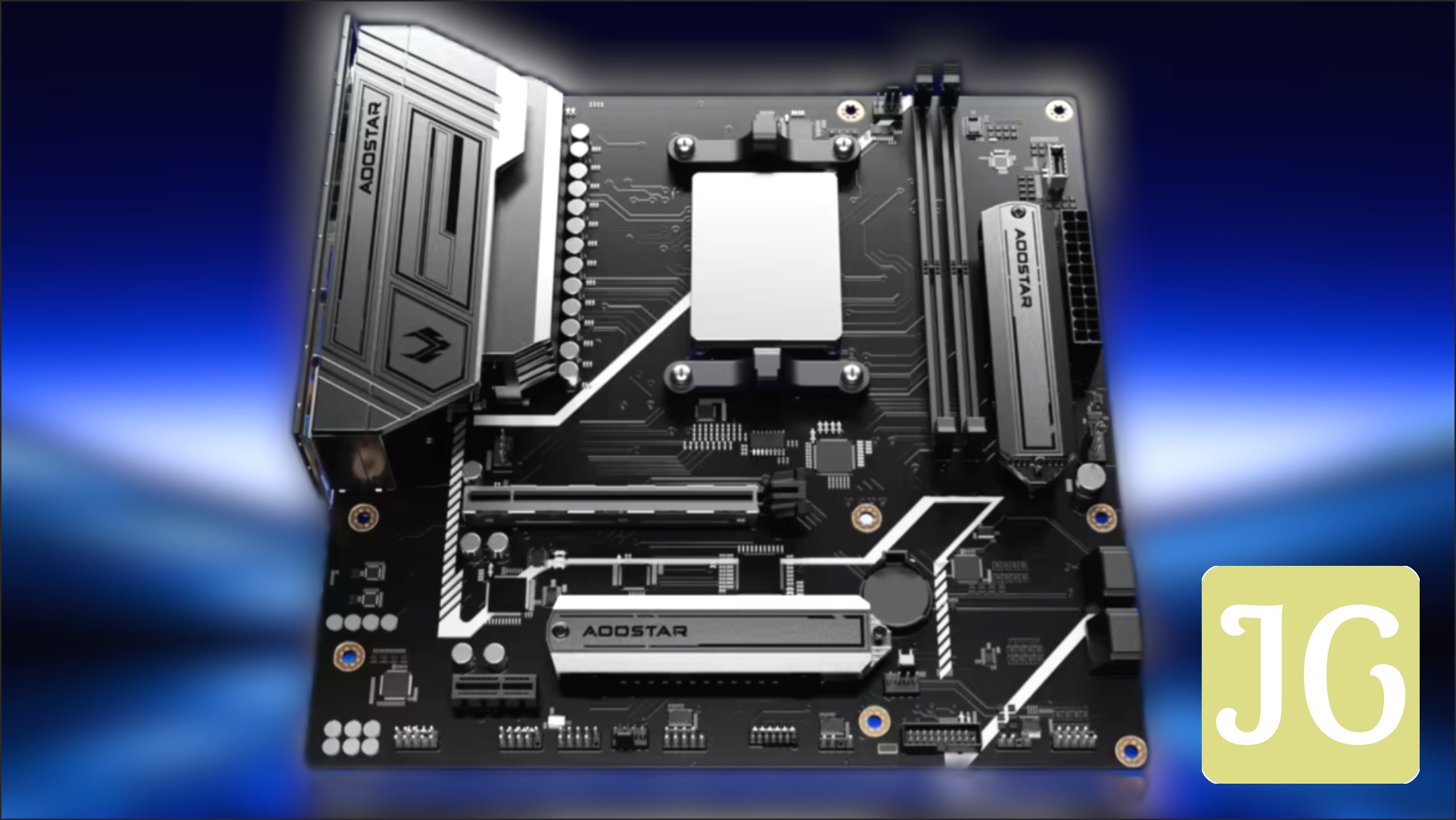The Desktop’s Mobile Revolution: AOOSTAR’s Bold Entry into MoTD
For years, the lines between mobile and desktop computing have blurred, but rarely has a product challenged the traditional PC building paradigm as directly as AOOSTAR’s new Ryzen 9 9955HX3D MoTD (Mobile on Desktop) motherboard. This isn’t just another component; it’s a statement, integrating AMD’s latest Zen 5 mobile flagship processors into a desktop form factor. While the concept of MoDT isn’t entirely new, AOOSTAR’s early market entry with high-performance X3D mobile chips sparks a crucial question: Is this a niche curiosity, or the beginning of a significant shift in how we build gaming PCs? This definitive guide will cut through the hype and the skepticism, providing a comprehensive look at what AOOSTAR’s MoTD platform offers, who it’s for, and what it means for the future of PC hardware.
The Core Dilemma: Mobile Power, Desktop Questions
AOOSTAR’s MoTD motherboards bring AMD’s powerful Ryzen 9 9955HX and 9955HX3D mobile CPUs to desktop. This innovation promises unique advantages like efficiency and thermal unlocking, but faces significant community skepticism regarding value, performance, and manufacturer reputation. Is this the future, or a clever repackaging of existing tech?
First Look: AOOSTAR’s Ryzen 9 9955HX3D MoTD Motherboard



A closer look at the AOOSTAR MoTD motherboard and the mobile Ryzen CPUs it houses.
AOOSTAR, a Chinese PC hardware brand, has taken the lead in the emerging MoTD market by being the first to release M-ATX motherboards featuring AMD’s new Ryzen 9 9955HX and 9955HX3D ‘Zen 5’ mobile CPUs. These boards are not just novelties; they are engineered with robust features designed to bring enthusiast-grade mobile processors, traditionally confined to high-performance laptops, into a desktop format. The CPUs are soldered directly onto the board, meaning upgrades necessitate a full motherboard replacement, a key distinction from traditional socketed desktop CPUs.
AOOSTAR MoTD Motherboard & Ryzen 9955HX/HX3D Key Specifications
| Form Factor | mATX |
|---|---|
| CPU Options | AMD Ryzen 9 9955HX, Ryzen 9 9955HX3D (Soldered) |
| CPU Architecture | Zen 5 |
| Cores/Threads | 16 Cores / 32 Threads |
| Boost Clock | Up to 5.4 GHz |
| TDP (Configurable) | 55W (up to 75W) |
| L3 Cache (9955HX) | 64 MB |
| L3 Cache (9955HX3D) | 128 MB (64 MB + 64 MB 3D V-Cache) |
| VRM Design | 10-phase with dedicated heatsinks |
| PCIe Slot | 1x Full-length PCIe 5.0 x16, 1x PCIe 4.0 x1 |
| M.2 Slots | 2x Gen5 x4 M.2 (with heatsinks) |
| SATA Ports | 2x SATA III |
| RAM Support | 2x DDR5 UDIMM slots (up to 128GB) |
| Cooling | CPU vapor-chamber baseplate, AM5 cooler retention |
| Power Connector | 8-pin CPU, 24-pin ATX |
The Zen 5 Mobile Powerhouse: Ryzen 9955HX and 9955HX3D
At the core of AOOSTAR’s MoTD offering are AMD’s latest Zen 5 mobile processors: the Ryzen 9 9955HX and its 3D V-Cache enhanced sibling, the Ryzen 9 9955HX3D. Both are formidable 16-core, 32-thread CPUs capable of boosting up to 5.4 GHz. The key differentiator, and the source of the ‘X3D’ designation, lies in the L3 cache. The 9955HX comes with a respectable 64 MB of L3 cache, while the 9955HX3D doubles this to an impressive 128 MB through an additional 64 MB of 2nd Gen 3D V-Cache. This technology, known for significantly boosting gaming performance in cache-sensitive titles, makes the 9955HX3D a particularly exciting prospect for a desktop gaming environment where thermal constraints are less of a concern than in a laptop.
AMD Ryzen 9 9955HX vs. 9955HX3D (MoTD Versions)
| Feature | Ryzen 9 9955HX | Ryzen 9 9955HX3D |
|---|---|---|
| Architecture | Zen 5 | Zen 5 |
| Cores/Threads | 16 Cores / 32 Threads | 16 Cores / 32 Threads |
| Max Boost Clock | Up to 5.4 GHz | Up to 5.4 GHz |
| Default TDP | 55W | 55W |
| Configurable TDP | Up to 75W | Up to 75W |
| L3 Cache | 64 MB | 128 MB (64 MB + 64 MB 3D V-Cache) |
The MoTD Advantage: Why Go Mobile on Desktop?
The appeal of MoTD platforms isn’t immediately obvious to everyone, especially given the established dominance of traditional desktop CPUs. However, there are several compelling advantages that make this form factor attractive, particularly for a specific segment of the PC building community:
- Unlocking Thermal Potential: Mobile processors are often thermally constrained in laptops. Integrating them into a desktop environment allows for robust air or liquid cooling solutions, potentially unlocking their full performance capabilities beyond what’s possible in a thin chassis.
- Power Efficiency: Many laptop SoCs are inherently more power-optimized than their desktop counterparts. While the 9955HX/HX3D still has a decent TDP, the underlying architecture can be highly efficient, especially at idle, which appeals to users conscious of power consumption.
- Cost Savings (Potentially): Mobile chips, particularly in BGA packaging, can sometimes offer cost advantages over their socketed desktop equivalents, though this is highly market-dependent and fluctuates.
- Compact, High-Performance Builds: The mATX form factor with an integrated CPU allows for very compact yet powerful systems, bridging the gap between mini-PCs and full-sized desktops, appealing to the SFF (Small Form Factor) community.
- Unique Value Proposition: For those who prioritize efficiency, specific mobile-centric features, or simply enjoy building unique systems, MoTD offers a distinct alternative to standard desktop platforms.
A Brief History: Mobile Chips Finding a Desktop Home
While AOOSTAR’s Zen 5 MoTD boards are a fresh development, the concept of integrating mobile processors into desktop motherboards is far from novel. This trend has a history, particularly in the Chinese market, where such solutions have been more common. Earlier this year, Minisforum introduced an ITX motherboard featuring the Ryzen 9 7945HX3D, demonstrating the platform’s capacity for high-performance mobile chips. Prior to AMD’s Fire Range, Intel’s Raptor Lake SKUs were also available in MoDT form factors. Even major manufacturers like Lenovo and Asus have offered desktop pre-built systems powered by mobile chips. This established precedent indicates a persistent demand for adapting mobile silicon for desktop applications, often driven by unique market conditions or specific performance/efficiency goals.
The Fandom Weighs In: Skepticism, Hope, and the Aoostar Question
No new hardware concept, especially one that challenges conventions, arrives without debate. The JoltGamer community, like many PC enthusiasts, has met the MoTD concept with a mixture of skepticism, distrust, and a sliver of hope. The primary concern revolves around the fundamental value proposition: if it’s a mobile CPU on a desktop board, isn’t it just a laptop in a tower? This sentiment, while understandable, often overlooks the specific advantages outlined earlier, particularly the thermal headroom and potential for power optimization.
The thing you found is just a mobile CPU on a desktop board. In fact, the whole thing you’ve just described is a laptop.
JoltGamer Community Member
Beyond the conceptual debate, a significant point of contention is the manufacturer itself. Aoostar, while a pioneer in this space, carries a reputation that has generated distrust among some. Concerns about build quality, long-term reliability, and support are common, even when features like robust VRMs appear promising. This highlights the challenge for smaller, niche brands to earn the trust of a discerning enthusiast market.
Aoostar is infamous for making absolute garbage — go check out how their NASes and network equipment turns out in the various home server subs. So those beefy VRMs are likely just cheap and overcompensating for poor design.
JoltGamer Community Member
However, not all sentiment is negative. There’s a hopeful faction that points to the evolution of other niche brands, suggesting that initial skepticism can give way to reputable offerings. The journey of companies like Minisforum or JGINYUE, which started with more budget-oriented or experimental products and later gained traction with quality offerings, serves as a beacon of possibility for Aoostar and the broader MoTD market.
Minisforum also started this way. And look at them now. Same with sooo many others. JGINYUE, for example. They’ve made elcheapo crappy MoBos for the longest time. Until they managed to hit the bullseye with their mini-ITX B650i ‘Night Devil’.
JoltGamer Community Member
MoTD: Pros and Cons for the Modern Builder
Advantages of AOOSTAR MoTD
- High Performance in a Compact Form Factor: Zen 5 mobile CPUs offer excellent multi-core and gaming performance in an mATX board.
- Enhanced Cooling Potential: Desktop chassis and coolers can significantly improve thermal management over laptops, allowing CPUs to sustain higher boost clocks.
- Power Efficiency: Mobile processors are designed for efficiency, potentially leading to lower idle and general power consumption compared to high-TDP desktop chips.
- Unique Build Opportunity: Caters to enthusiasts looking for something different from traditional desktop or mini-PC builds.
- 3D V-Cache for Gaming: The 9955HX3D variant offers substantial gaming performance benefits in cache-sensitive titles.
Disadvantages of AOOSTAR MoTD
- Soldered CPU: No CPU upgrade path; motherboard replacement is required for future processor generations.
- Niche Market & Availability: Currently limited to the Chinese market with uncertain global availability and support.
- Manufacturer Reputation: Aoostar’s reputation for quality is a point of concern for some, requiring careful consideration.
- Pricing Parity: While competitive, the total cost may not always be significantly cheaper than a traditional desktop build with comparable performance.
- Limited Motherboard Features: While robust, it may lack some of the extensive I/O or advanced features found on high-end desktop motherboards.
Pricing & Value: Is the MoTD a Budget King or Niche Luxury?
The pricing of AOOSTAR’s MoTD offerings is a key factor in its appeal. With the Ryzen 9 9955HX version priced at approximately $500 USD and the 9955HX3D model at around $650 USD, they position themselves as a compelling alternative. Notably, the 9955HX3D MoTD combo is approximately $50 cheaper than purchasing the desktop Ryzen 9 9950X3D CPU alone (which retails for $700). The 9955HX version, at $100 less than its 3D V-Cache counterpart, offers specifications virtually identical to the desktop Ryzen 9 9950X, highlighting the competitive pricing and performance value of these new MoTD solutions. However, it’s important to consider the total system cost when comparing to a traditional build.
MoTD vs. Traditional Desktop: Price & Performance Snapshot (Approx. USD)
| Component/Platform | Approx. Price | Key Performance/Value |
|---|---|---|
| AOOSTAR MoTD (Ryzen 9 9955HX) | $500 (CPU + Board) | 16C/32T Zen 5, 64MB L3, 55W TDP, mATX |
| AOOSTAR MoTD (Ryzen 9 9955HX3D) | $650 (CPU + Board) | 16C/32T Zen 5, 128MB L3 (3D V-Cache), 55W TDP, mATX |
| Ryzen 9 9950X (Desktop CPU) | $434 (CPU Only) | 16C/32T Zen 5, 64MB L3, 170W TDP (Requires Motherboard) |
| Ryzen 9 9950X3D (Desktop CPU) | $700 (CPU Only) | 16C/32T Zen 5, 128MB L3 (3D V-Cache), 120W TDP (Requires Motherboard) |
| Mid-Range B650 Motherboard | $200 (Board Only) | Standard AM5 platform, for socketed CPUs |
When comparing the total cost of a MoTD build to a traditional desktop, the picture becomes clearer. While the MoTD bundles offer a CPU and motherboard for a price competitive with or even slightly lower than a standalone high-end desktop CPU, the lack of upgradeability for the CPU is a significant trade-off. For builders seeking maximum flexibility and future-proofing, a socketed desktop platform remains the traditional choice. However, for those comfortable with the integrated nature and seeking a complete, high-performance foundation at a specific price point, the MoTD offers a compelling, albeit less flexible, alternative.
The Road Ahead: What AOOSTAR’s MoTD Means for PC Building
AOOSTAR’s pioneering move with Zen 5 MoTD motherboards could signal several potential shifts in the PC hardware landscape. Firstly, it validates the continued interest in integrated, power-efficient, yet high-performance solutions, especially for compact builds. Secondly, it puts pressure on traditional motherboard manufacturers to innovate in the SFF space, perhaps exploring similar integrated solutions or offering more compelling value propositions for their socketed mATX and ITX boards. Thirdly, it highlights the increasing versatility of AMD’s mobile Zen architectures, capable of excelling in diverse form factors. While global availability and long-term support remain key questions, AOOSTAR has undeniably thrown a fascinating curveball into the desktop PC market, forcing us to reconsider what a ‘desktop’ CPU truly is.
AOOSTAR’s MoTD: A Niche Innovator with Disruptive Potential
AOOSTAR’s Ryzen 9 9955HX3D MoTD motherboard is a bold, albeit niche, innovation. It successfully brings the power and efficiency of AMD’s Zen 5 mobile flagship CPUs, including the gaming-centric 3D V-Cache variant, to a desktop form factor. While the soldered CPU limits upgradeability and the manufacturer’s reputation warrants caution, the value proposition for a compact, high-performance, and thermally optimized system is undeniable. For enthusiasts looking to build a unique, power-efficient gaming rig that leverages the best of mobile silicon in a desktop environment, AOOSTAR’s MoTD offers a compelling, if unconventional, path forward. It’s not for everyone, but it’s a significant step for the MoTD segment, and one that traditional builders should watch closely.
Your Burning Questions Answered: MoTD FAQ
What does MoTD stand for?
MoTD stands for ‘Mobile on Desktop’, referring to motherboards designed to integrate mobile (laptop) CPUs into a desktop PC form factor.
Are MoTD CPUs upgradeable?
No, the CPUs on AOOSTAR’s MoTD motherboards are soldered (BGA package), meaning you cannot upgrade the CPU independently. An upgrade would require replacing the entire motherboard.
What are the main advantages of an MoTD system?
Key advantages include potentially better thermal performance for mobile CPUs (due to desktop cooling), improved power efficiency, and the ability to build compact yet powerful systems using high-end mobile silicon.
How does the Ryzen 9 9955HX3D compare to a desktop Ryzen 9 9950X3D?
Both are 16-core, 32-thread Zen 5 CPUs with 3D V-Cache, offering excellent gaming performance. The mobile 9955HX3D has a lower default TDP (55W vs 120W) and is integrated into the motherboard, while the desktop 9950X3D is a socketed CPU with higher power limits and typically higher peak performance.
Is AOOSTAR a reputable brand?
AOOSTAR is a Chinese PC hardware brand that has gained attention for its innovative MoTD solutions. While some community members express skepticism about its long-term reliability based on past products, others point to the potential for niche brands to evolve and improve, similar to Minisforum. Due diligence is recommended.
Where can I buy AOOSTAR MoTD motherboards?
Currently, AOOSTAR MoTD motherboards are primarily available in the Chinese market. Global availability has not yet been confirmed.
Sources & Further Reading
- Tom’s Hardware: AMD Ryzen 9 9955HX3D MoTD Motherboard Debuts
- AOOSTAR Official Announcements (via Bilibili)
- Phoronix: Framework’s Ryzen AI Max Power Consumption Tests
- Minisforum Product Teasers
- JoltGamer Community Forums & Discussions

